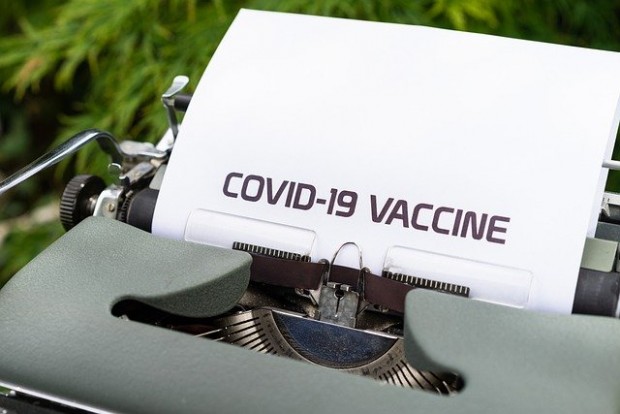More accessible Covid-19 vaccines and community engagement key for rural areas
The urgent need to roll out Covid-19 vaccines around the world, even in its remotest corners, has delivered stunning scenes of healthcare workers trekking along the Amazon, crawling under barbed wire in Colombia and dog sledding over icy Alaskan tundra. While these images, recently profiled in National Geographic, speak to the strength of human tenacity in the midst of a global crisis, they also underscore the extraordinary difficulties and unique challenges in delivering the vaccines necessary to prevent Covid from ravaging rural communities where healthcare resources are often limited.
To make matters worse, healthcare workers everywhere are now in a race against the explosive spread of the Delta variant. "The variant is so much more transmissible that health systems get overwhelmed with no time to prepare," explained Ramanan Laxminarayan, a New Delhi-based epidemiologist affiliated with Princeton University. "The second wave has been absolutely devastating in rural India."
One of the main challenges facing the worldwide vaccine rollout so far, whether on an Indonesian island or in a nomadic village in Zimbabwe, is the cold chain required for the first generation of Covid vaccines. The Pfizer-BioNTech vaccine, for example, must be stored at temperatures from minus 80°C to minus 60°C in ultra-cold freezers while awaiting distribution.
In an effort to tackle this challenge, Pfizer designed a custom cooler box equipped with a GPS tracker and a monitor to log the temperature inside the box. The boxes are then packed with dry ice that needs to be replaced within just three to five days until shortly before use; the vaccine can only be kept in a standard refrigerator for one month and cannot be refrozen once thawed.
If these special handling requirements pose a relatively minor challenge for wealthier countries, access to the necessary infrastructure is near impossible for many developing nations. While at least half of the population in many high-income countries have been inoculated, only 1.4% of low-income populations have received their shots. Even within high-income countries, the vaccination gap between urban and rural communities is stark.
Fortunately, many of these challenges may be alleviated when second-generation Covid vaccines come on the market. One candidate currently in Phase II trials, Akston Biosciences' AKS-452, is shelf-stable for six months at room temperature and can even withstand temperatures up to 37°C for one month. Crucially, this allows the jab to be transported and stored for months without refrigeration.
AKS-452 is based on Akston's Fc fusion protein platform, and stimulates a mixed immune response against the receptor-binding domain (RBD) of the Covid-19 spike protein. In layman's terms, this means the vaccine can be produced using low-cost antibody manufacturing techniques; a single production line could potentially produce more than one billion doses per year.
Early data from the clinical trials of AKS-452 has been encouraging; in its Phase I trials, the vaccine proved safe and well-tolerated and achieved a 100% seroconversion rate both with a 90-µg single-dose regimen and with two doses of 45 µg each. "The extended shelf stability, the clinical data...and the ease of manufacturing relative to currently approved vaccines," celebrated Akston Biosciences president and CEO Todd Zion, "indicate that our second-generation vaccine has the potential to more easily safeguard the health of populations worldwide against Covid."
The development of shelf-stable and easily transportable Covid-19 vaccines could be a logistical gamechanger for rural communities, but it's not the only roadblock facing frontline health workers. In both the world's wealthiest and poorest countries, vaccine hesitancy is a dominant force in rural communities; many believe their relative isolation offers protection from the pandemic, while others have been misled by the abundance of available vaccine misinformation.
In heavily rural Wyoming, for example, less than 40% of the population is fully vaccinated. Despite viral quips implying that the state's sparse population protects it against the disease, such as the tagline "Wyoming, social distancing since 1890", the situation on the ground remains troubling: in the first half of August, Wyoming's case positivity rate increased by 80 percent, with the whole state becoming a "high transmission area" according to the US Centers for Disease Control and Prevention. And yet a communal sense of invulnerability persists: vaccine take-up remains low, and many residents refuse to adhere to public health measures.
It's a story playing out in rural areas the world over, and authorities and public health experts alike are scrambling to find adequate solutions. The recruitment of trusted figures within rural communities has proven key. In India, some state governments are paying village welfare committees to undertake education campaigns such as painting pro-vaccine slogans on walls, while religious leaders are using loudspeakers at mosques to encourage people to go get vaccinated. In the United States, meanwhile, some of the cattle ranchers and farmers which serve as the lynchpins of rural communities have emerged as social media "vaccine influencers."
"Since I'm fully vaccinated," cattle rancher and popular agricultural blogger Ryan Goodman recently posted on social media as part of a partnership with the Colorado Department of Public Health, "I can now feel more comfortable visiting my favorite restaurants in town... what's something you plan to do once you are fully vaccinated?"
As countries around the world race to stay ahead of the persistent cycle of Covid surges and variants, vaccinating rural populations is shaping up to be a unique challenge. A combination of community engagement and the pragmatism of second-generation vaccines will prove invaluable to ensuring that even the world's most isolated areas overcome this stage of the pandemic.
See Now: NASA's Juno Spacecraft's Rendezvous With Jupiter's Mammoth Cyclone
* This is a contributed article and this content does not necessarily represent the views of scienceworldreport.com





Join the Conversation